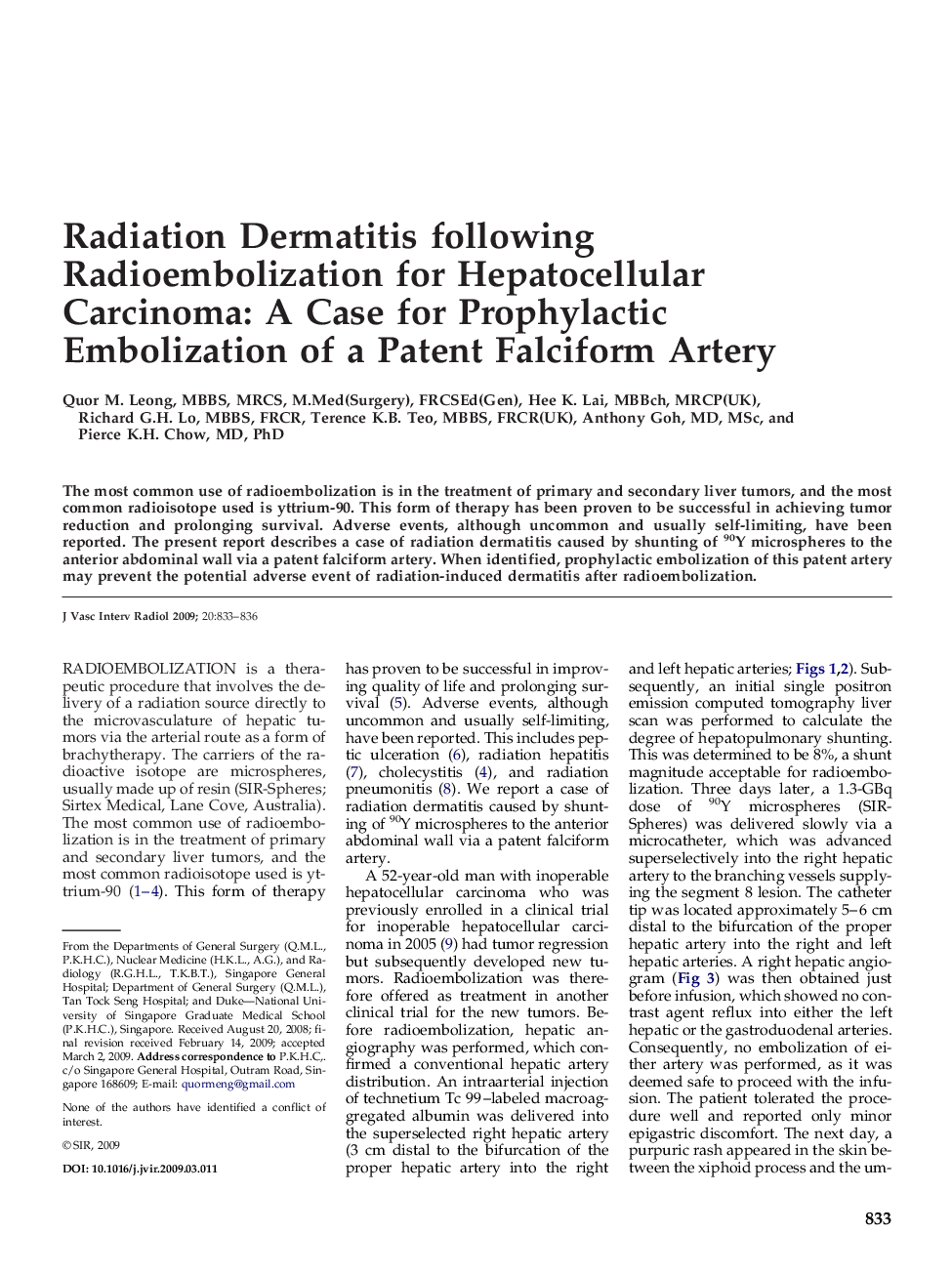| Article ID | Journal | Published Year | Pages | File Type |
|---|---|---|---|---|
| 4242042 | Journal of Vascular and Interventional Radiology | 2009 | 4 Pages |
Abstract
The most common use of radioembolization is in the treatment of primary and secondary liver tumors, and the most common radioisotope used is yttrium-90. This form of therapy has been proven to be successful in achieving tumor reduction and prolonging survival. Adverse events, although uncommon and usually self-limiting, have been reported. The present report describes a case of radiation dermatitis caused by shunting of 90Y microspheres to the anterior abdominal wall via a patent falciform artery. When identified, prophylactic embolization of this patent artery may prevent the potential adverse event of radiation-induced dermatitis after radioembolization.
Related Topics
Health Sciences
Medicine and Dentistry
Radiology and Imaging
Authors
Quor M. MBBS, MRCS, M.Med(Surgery), FRCSEd(Gen), Hee K. MBBch, MRCP(UK), Richard G.H. MBBS, FRCR, Terence K.B. MBBS, FRCR(UK), Anthony MD, MSc, Pierce K.H. MD, PhD,
